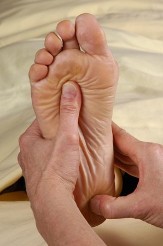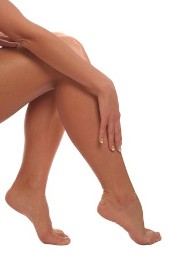Corns (hard calluses that form on the top of the toe) can be caused by several different factors. While improperly fitting shoes are a leading cause of corns, they can also be caused by toe deformities such as hammer toe or claw toe.
No wonder you need supportive shoes: With every step you take, you apply the pressure of 1.5 times your body weight on your foot. For example, a 200-pound man places 300 pounds of pressure on his foot each time he takes a step.
If your corns or calluses are annoying but not painful or inflamed, try this simple technique: When skin is moist after a shower, rub away the top layer with a washcloth. Do this gradually over a period of weeks to reduce their size and thickness.
Although sleek high heels can be the perfect fashion accessory, they can also be the source for your foot discomfort. Tight shoes are a primary cause of ingrown toenails.
People with diabetes must be fully aware of how to prevent foot problems before they occur, by being able to recognize problems early on and to seek the right treatment with a podiatrist as soon as possible.
Did you know that when you walk, the pressure on your feet is greater than your total weight? If you are jogging or running, the pressure your feet withstand can be two to four times greater than your weight.
There are several indicators of a well fitting shoe. Primarily, there should be a half-inch of space from the end of your longest toe to the end of the shoe. You should also be able to freely wiggle all of your toes in them.
While it’s always advisable to rest an injured foot instead of pushing past the pain, rest and heat or ice alone may not be enough to cure it. When you need help dealing with a stubborn issue, we’re always here to help.
As we age, the foot arches become less defined, which can affect posture, height and gait. Similar common and comparatively minor changes in the feet can, according to the National Institutes of Health, reduce mobility, change the gait, and affect strength and endurance.
Do you suffer from foot pain, and you can’t figure out why? Have you tried everything? A podiatrist can help you figure out exactly what is going on and can offer you relief that other physicians can’t.
Treatment for Achilles tendinitis can vary based on the severity of the case. Ice and immobilization is fairly common along with splints to wear overnight that help to properly stretch the tendon while you sleep.
A heel fissure, also called a cracked heel, can be a painful condition. Invest in a foot file and some good moisturizer to treat cracked heels and keep this condition from returning.





